Amid concerns of rampant development, the Urban Growth Boundary, a tool to guard against urban sprawl, was adopted by the City of Sonoma in 2000. Without Council or voter renewal, the UGB will expire in 2020. How will factors like tourism, housing and city infrastructure shape the debate to extend it?
Sonoma’s present Urban Growth Boundary (UGB) was codified in the year 2000, and made effective until the year 2020. Adopted through a citizens’ ballot initiative processed, the UGB was approved by Sonoma voters with 68% of the vote; at its passage, twenty years seemed like a long time. Yet, sixteen years have gone by quickly, and like the other Sonoma County municipalities which have also adopted UGBs, Sonoma’s UGB must be renewed or it will expire.
The creation of Sonoma’s UGB was a response to development conditions at the time, as well as growing concerns about preserving open space and farmland amidst a vigorous environmental movement which began in earnest on Earth Day in 1996. The situation today has altered; development conditions and economic factors have changed, attitudes towards housing, open space and farmland are undergoing review and challenge, and the environmental movement is no longer young and has gone mainstream.
If the UGB is renewed, it will by necessity be in response to a community which geographically remains the same, but culturally and economically is vastly different than it was even sixteen years ago.
An historical perspective
By 1990, the City of Sonoma began a decade of physical growth; large parcels of agricultural land at the edges of the city were being annexed, rezoned and sold for housing developments. Like other parts of the Bay Area, including Petaluma, Sonoma found itself in the middle of a housing “boom” and sprawl began to look inevitable. National home builders such as KB Homes seized the opportunity, building hundreds of homes in a few short years. Municipalities – Sonoma included – began to see housing related tax and fee revenues as the ticket to future economic stability. In addition, competition for sales tax revenue combined with sprawl to stimulate a “big box” construction surge, mostly along the Hwy. 101 corridor.
Sonoma’s isolation from Hwy. 101 or another major transportation artery had long served to protect the community from some of the excesses of the boom in real estate construction. This protection was fragile, however, and members of the public and some on the City Council began to advocate for the creation of a UGB.
Then City Council member Larry Barnett, initiated and effort to create a UGB in 1998 and met resistance on the part of the City Council majority. Barnett’s efforts came on the heels of a ballot measure spear-headed by attorney Joe Costello (who was later elected to the City Council); Sonoma voters had soundly rejected a proposal by Texas-based Rosewood Hotels to construct a 100+ room luxury hotel on the northern hillside owned by the City of Sonoma located above Mountain Cemetery. The mood in the community was decidedly anti-growth. After two years of refusal to adopt a UGB on the part of the council majority, Barnett was joined in his efforts by then council member Ken Brown, who was serving his first term in office. The two of them collaborated with community advocates and began the process of a citizen’s initiative to create a ballot measure to establish the UGB.
A committee was formed, and included citizens such as Gary Edwards (now on the City Council), Howard Egger Bovet, Wylie Hartmann (now deceased), Bud Fiske, and the late Robert Behrens. Research to help define a city limit was conducted with consideration of the city’s General Plan and Housing Element. Legal issues pertaining to satisfying state housing requirements were reviewed and once all this work was completed, the language of a ballot initiative was drafted, petitions circulated, qualifying signatures gathered and placement on the ballot took place. A split City Council signed opposing ballot arguments, Barnett and Brown in favor and Carter, Ramponi and Mazza against.
Heightened sensitivity in the city about preserving the small-town character of Sonoma was combined with concern about preserving natural resources and greenbelts. The limits of our local “carrying capacity” – water, sewer and roads – became more obvious and compelling. Economic arguments about being business-friendly, generating money for schools and public amenities were offered by opponents, but as the final results indicated, they were not strong enough to persuade the majority of voters that money-related issues outweighed cultural and environmental concerns.
A vigorous but polite public debate was held between proponents and opponents at the Vet’s Building; Barnett and Hartmann faced-off against former Supervisor Ig Vella and developer Art Fichtenberg. 350 people showed up to hear the arguments from both sides. Editorials in the Sonoma Index-Tribune and opinion at the Chamber of Commerce articulated negative positions. Ultimately, as noted, the ballot measure passed overwhelmingly and the UGB regulations went into full effect in 2000. Eventually, every city in Sonoma County passed UGB regulations.
How the present UGB works
Through passage of the UGB, Sonoma’s city limit was made contiguous with its Sphere of Influence. A Sphere of Influence defines an area in which a presumption of annexation and extension of future urban services, such as water and sewer, will occur. Annexation is the process by which land is added to a municipality. It involves a series of legal steps and specific actions including approval by county agencies, and votes by property owners in the affected area.
The UGB adoption essentially froze the process of annexation, and locked-in the city limit and Sphere of Influence for a period of twenty years. The premise was that a twenty-year period would be in excess of the time speculative investors would purchase and hold land with the expectation of its development. In investment terminology, twenty years was beyond the limit of so-called “patient money.”
The trade-off is Development Code language and revised zoning which encourages higher density and promotes in-fill development, policies which often stimulate neighborhood opposition where historical density has been lower by historical comparison; simply put, “out and sprawl” has been replaced with “in and up.”
Provision was made for the annexation of some additional land beyond the UGB for specific purposes if it could be shown that no other option was available. Included in this provision was land for affordable housing and public-serving facilities such as schools.
Asked about this, David Goodison, Planning Director for the City of Sonoma, replied, “As I re-read the UGB language, it allows for parks and public schools to be brought in without conditions. It allows for affordable housing sites to be brought in subject to specific findings, which in my view would be quite difficult to make (which was no doubt the point).”
Coincident with the passage of the UGB was agreement by the County of Sonoma to respect its intent, and not pursue dense or commercial development outside Sonoma’s UGB. This commitment has been respected and fulfilled by the County.
The current conditions
The passage of sixteen years inevitably brings change, and an extension of the UGB will necessarily take place amid altered economic and cultural factors. Housing prices, land prices, population growth, use of agricultural land, and an evolving community demographic will all influence a renewal process.
In 1999, Sonoma still retained a large measure of its historical working-class and middle-class roots; homes could still be bought for less than $300,000 on the east side of town. This contrasts with median home prices on the east side today of $700,000-plus. Rents display the same rate of inflation, exacerbated by illegal vacation rentals which many believe is depriving the community of housing stock for residents. Land prices have ballooned, and demand is in part driven by the enormous wealth created during the past decades by high-tech companies located in the Bay Area, a population of well-heeled millennials looking for second homes in the wine country.
Tourism and winery development has mushroomed as well. Buoyed by a infusion of Tourism Improvement District (TID) millions for promotion, Sonoma’s hotels are on approach to an 80% annual occupancy rate, a rate called “impossible” by hotel managers merely three years ago. In response, new hotels are now in the approval stage. In an election to limit the size of hotel development until occupancy reached 80%, that proposal was defeated in 2013 by 124 votes, less than 1%. This revealed a community more closely split on issues of growth than had been the case in 1999.
Impacts on housing
Regionally, population projections indicate the Bay Area will surge in the decades ahead. Though Sonoma’s Housing Element and General Plan, combined with a Growth Management Ordinance limiting the number of new homes to roughly a few dozen each year would appear to mitigate population pressures, a demographic change from working-class to second-home owners and extremely wealthy entrepreneurs and retirees makes past planning assumptions questionable. Only a small percentage of those who work in Sonoma can afford to live in Sonoma; teachers, nurses, safety personnel and service industry workers are all unable to find housing they can afford. Movements are afoot around the Bay Area to legally challenge constraints on housing growth, both by advocates for low income earners and young, high-wage professionals.
When asked to comment on local housing, David Ransom, member of the housing advocacy group at the United Methodist Church in Sonoma, had this to say: “A recent decision of the California Supreme Court has supported local governments’ ability to require that a percentage of new-built housing be affordable, and presumably that could be that eighty-percent should be affordable as easily as the current 20 percent.”
He added, “Building a majority of “market-rate” housing in Sonoma — when the market rate is unaffordable for most of us — only worsens the problem. If the for-profit developers and investors can’t build housing that the rest of us can afford, then maybe they’d better back off.”
He concluded his comments, “The income of so many of us is stagnating, while at the same time speculators and investors are jacking up housing prices and rents to whatever the market will bear. Meanwhile, the new, high-income tech-industry gentry are coming north from Silicon Valley and San Francisco — or China — and defining what the market will bear. Are we supposed to move to the Central Valley and commute?”
Agricultural land, which historically was used for production of animal forage for dairy cows, or orchards for walnuts is now increasingly being converted to grape vineyards. Diversity of uses of agricultural land has essentially ended.
The experience of other towns which had embraced sprawl and development in the past has buttressed pro-UGB arguments that, over time, such development extracts more money from the community than it contributes. Petaluma and Rohnert Park have grown tremendously, but their budgets cannot keep pace with the increased costs of maintaining infrastructure, public safety and government services. Petaluma was recently cited as having the worst road maintenance in Sonoma County, and Rohnert Park now depends upon revenue from the Rancheria Casino. The “big box” strategy that focused on producing sales tax revenue resulted in years of abandoned real estate, dubbed “white elephants.”
Finally, though the Sonoma community remains environmentally savvy, economic factors now dominate discussions of development and the provision of government services. Unfunded government pensions present an enormous future financial liability. As land, housing and commercial values have increased, historical and cultural considerations are either being set aside or forgotten in the rush to maximize profits or tax revenue. The so-called “sharing economy” has disturbed traditional business models and regulatory controls. All this represents a shift in cultural values that will surely impact discussions and decisions pertaining to the renewal of the UGB.
UGB Options going forward
The simplest course of action would be for the City Council to place a measure on the ballot simply renewing the existing UGB regulations for an additional twenty years or more. This approach avoids many of costs associated with replacing the existing UGB measure with a new one, and also reduces the time needed to prepare a ballot measure. The City Council of Cotati recently decided to do just that, renewing its existing UGB for an additional 30 years.
Asked to comment, Teri Shore, Regional Director for Greenbelt Alliance comments, “The cities of Santa Rosa, Petaluma, and Healdsburg have already renewed and extended their voter-approved UGBs for 20 years or longer with few if any changes. Allowing the expiration of voter protections for any urban growth boundary opens the door to development beyond the growth boundaries with a simple majority vote of the City Council instead of a vote of the people,” she added.
“While all nine cities and the County of Sonoma are committed to city-centered growth,” she continued, “development pressures are increasing around the edges of towns and communities. UGBs are expiring in Windsor in 2017 and Rohnert Park in 2020. The city of Sebastopol just renewed its voter-approved UGB for 25 years with the same boundary but stronger policies to prevent sprawl. The residents of Cotati will vote to renew its UGB for 30 years in November.”
Sonoma County’s community separator policies are companion measures to the UGBs that create green buffers in county lands between towns and cities. The voter protections for community separators are now up for renewal for 30 years with a countywide vote in November 2016.
A Sonoma UGB measure can be placed on the ballot either by voters or by the City Council. If the decision of the City Council is to draft a new UGB measure, that work will have to begin almost immediately, as legal requirements for a government placing measures on the ballot are stringent and specific.
Moreover, if the boundary changes, extensive studies will likely be required including a full EIR costing in the range of $100,000. If the City Council wants to expand the existing UGB, an entirely new measure will be necessary requiring years of costly preparation. For example, an expansion of the UGB to 8th Street East, including all the land between Napa Street and Napa Road would increase the developable land acreage in Sonoma by a whopping 25%.
If a new measure is placed on the ballot by voters, it will also require considerable effort. A petition process is required and must conform to stringent legal regulations. Again, this option requires nearly immediate initiation.
Planning Director Goodison explained “that it may be desirable to incorporate consideration of the UGB in the next comprehensive update of the General Plan, which would presumably occur prior to the expiration of the UGB. This would allow many of the issues to be specially addressed through a public process.”
If renewed as is, the existing UGB must provide for enough land to satisfy the housing needs of the city for the renewal period. A review of the existing parcel availability, housing projections, regional mandates and other relevant considerations must be brought to bear in this analysis. Goodison, notes this issue is important. “For example,” he commented, “the current RHNA (Regional Housing Needs Assessment) planning period extends only to 2023, which is not a long window in comparison to a potential 20-year term of a renewed UGB.”
Ultimately, any plan will be subject to the will of the voters. Whether renewal or expansion are on the ballot, opinion will vary. Many, but not all, of the arguments made in 2000 will still get traction. It is undeniable is that the UGB has prevented sprawl, but some argue that it is also responsible for the hike in land and home prices. Ideally the community will find a path forward that avoids mere confrontation; time will tell, but time is also running out quickly and decisions must be made.

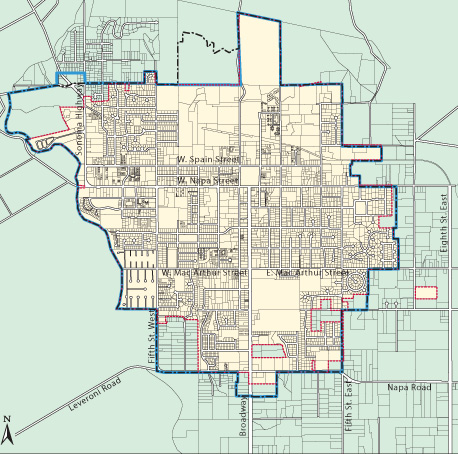

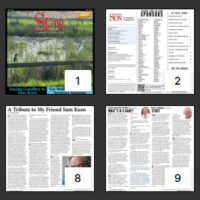
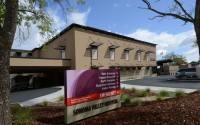

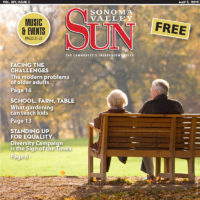
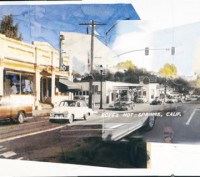

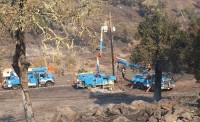
Be First to Comment